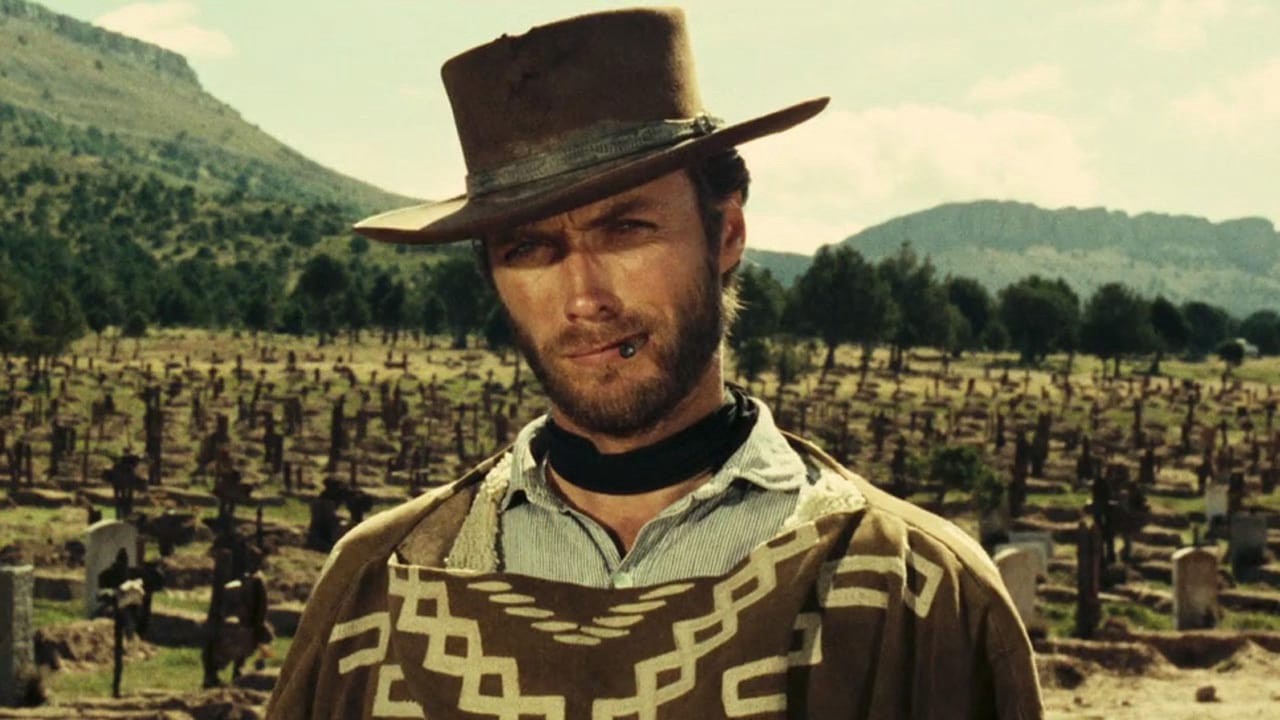
Is there any other cinematic artist more synonymous with a single genre than Clint Eastwood is with the western?
Of course, there are comedians such as Buster Keaton, Charlie Chaplin, Steve Martin or Eddie Murphy, but that’s something else, since they rarely venture outside of their comedic vehicles. And then there are the Hammer stars such as Vincent Price, Peter Cushing and Christopher Lee that defined the classic horror movie. And, it must be mentioned, there is also John Wayne, Eastwood’s predecessor in the realm of iconic cinematic cowboys. All are worthy, strong contenders, but there’s something that puts Eastwood in the lead: none of them can evoke more instantly an entire slice of cinema as Eastwood’s iconic face in any frame from the Dollars Trilogy; those squinting eyes; the hat, the pose and the poncho are enough to transport any cinephile and even neophyte to the sandy wastelands of the Old West.
So here’s a comprehensive look back on every single western he has ever starred in, an assessment and celebration of an enviable cinematic legacy.
(Note: the early westerns from the ‘50s in which Eastwood played supporting parts are not included because the list is restricted only to those he starred in).
12. Paint Your Wagon (1969)
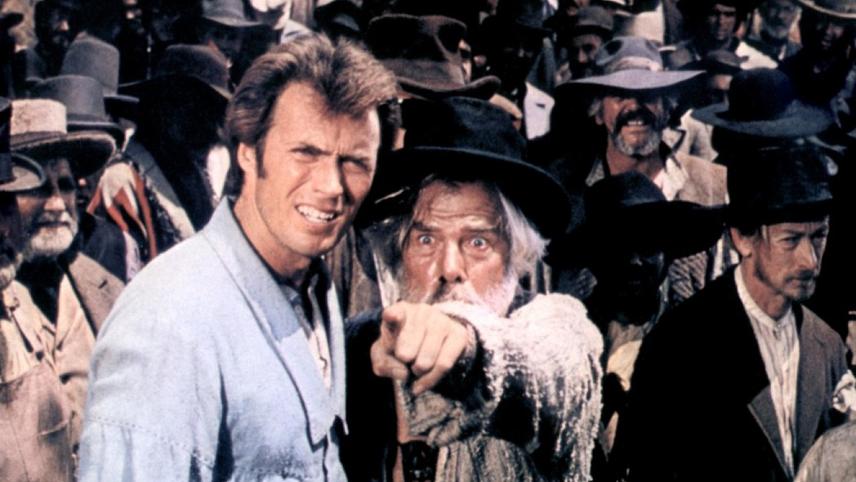
Though it has long since fallen out of fashion, the western musical was for many years a fruitful subgenre of Hollywood filmmaking, generating mostly small budget B-movies that garnered enough profit to justify similar installments – and eventually it became popular enough that it made its way into high-class studio fare, which is how we got classics such as “Calamity Jane” and, of course, “Seven Brides for Seven Brothers.”
Made in the eye of the storm that was the fall of the movie musical era, “Paint Your Wagon” was the last, desperately long gasp of this dying tradition. Its tortured production featured all of the hallmarks of other infamous musical failures of its time (the most notable being “Hello, Dolly!”): an already generous budget was doubled throughout filming; it went over schedule by several months; its stars acted out frequently (Lee Marvin was allegedly drunk every single day of the shoot).
But if “Hello, Dolly!” had, at least, a ridiculously talented filmmaker at the helm who managed to create breathtaking musical sequences amidst the chaos, “Paint Your Wagon” was made by an inexpressive no-name director who, to make matters worse, had his cut reshaped by the studio. The result is a mess; aside from being obscenely overlong, the film is bland looking (it’s some kind of twisted miracle to create zero interesting images shooting in Panavision), the choreography of the numbers suffers from a lack of energy and imaginative staging, the comedy is flat, and so on.
Today it’ll interest only those who are curious to see the only collaboration between Lee Marvin and Clint Eastwood, but you’re better off just watching the Simpsons parody. At least it’s two minutes long.
11. Joe Kidd (1972)
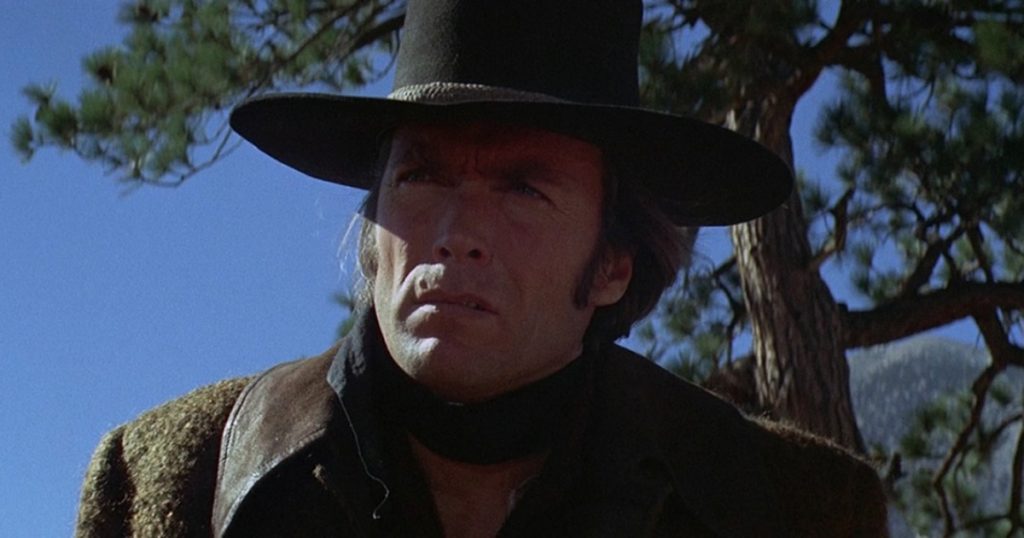
A western directed by John Sturges, written by Elmore Leonard, starring Clint Eastwood, and featuring Robert Duvall as a villain should’ve been an instant classic, but alas, you’d be hard pressed to find many people today, even in well-informed film circles, who have even heard of “Joe Kidd.”
There’s nothing particularly bad or wrong with the movie, per se, but considering the murderer’s row of talent assembled, the staggeringly generic nature of the movie can’t help but feel depressing. Eastwood himself is said to have been disappointed both with the process and the finished film, particularly due to Sturges’ alleged constant drunkenness on the set, which led to him to be sloppy and uninterested in the work.
It certainly shows: aside from the occasional pretty vista, “Joe Kidd” suffers from a lack of any sort of visual inspiration or storytelling gusto that made previous classics by the director so great – there’s nothing here that comes close to the ecstatic thrills and brilliant craft of “The Great Escape” or “Bad Day at Black Rock.” As it is, it represents just another sad chapter in the decline of a great filmmaker – and a forgettable misstep in the rise of an iconic movie star.
10. Hang ‘Em High (1968)
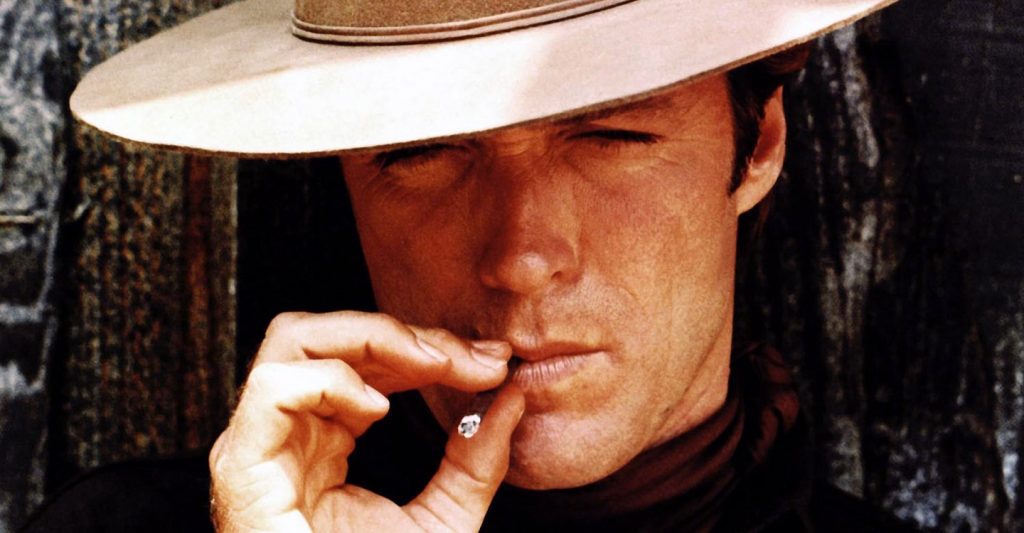
Eastwood began his career playing supporting roles in B-westerns before breaking big with “Rawhide,” one of the quintessential western TV shows that were so popular in the ‘50s and ‘60s and from which many a star made their name, including Steve McQueen (the type of show Tarantino wonderfully homaged in his latest film).
But the true beginning of his reign as American cinema’s foremost cowboy, replacing even the titanic image of John Wayne, was in “Hang ‘Em High,” the first American western he starred in. Of course, it was Leone’s Dollars Trilogy that made him an icon and a secure bet for the genre, but even if those movies were in English, they were Italian made through and through – they forged a whole new stylistic handbook for the genre that was a far cry from John Ford and Howard Hawks.
“Hang ‘Em High” was his return to the homeland after the Italian tour, and it’s an interesting artifact of a genre in ongoing metamorphosis. The film’s style is reminiscent of classical Hollywood westerns of yore, but it’s already infused with spaghetti elements, including higher levels of violence and a Morricone-esque score. The movie is nothing especially notable, but it’s still entertaining, sturdy, workmanlike filmmaking that will be particularly interesting for fans of the genre, historically, if nothing else.
9. Two Mules For Sister Sara (1970)
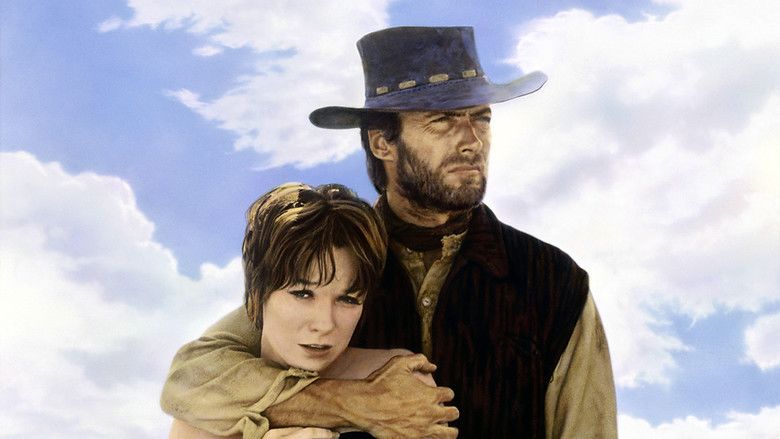
Throughout their collaboration, Eastwood and Don Siegel made a few movies adjacent to the western while never quite fitting into it. “Coogan’s Bluff” put the cool cowboy archetype into a modern environment and played with the associated iconography (hats, boots, revolvers); “The Beguiled” was set during the traditional timeline of westerns but had more to do with psychosexual thrillers than shoot-em-ups.
“Two Mules For Sister Sara” was their only straight entry into the genre and, though it’s far from the best either artist had to offer, together or apart, it’s still a deliciously entertaining little film, especially due to the chemistry between Eastwood and his co-star Shirley MacLaine.
Being one of the quintessential cinematic tough guys, Eastwood’s characters rarely interacted with female counterparts who could go toe-to-toe with him and, if anything, in the early part of his career, he would often play unrepentant misogynists (his rapist protagonist in “High Plains Drifter” being the most disturbing example). This film is the most pleasant outlier in that regard, since Eastwood’s mercenary is not only matched but frequently bested by MacLaine’s titular character – both inside the world of the story, and in simply in terms of acting.
Though is has little in the way of memorable sequences or great thrills, “Two Mules For Sister Sara” is still packed to the brim with Siegel’s effortless tonal and aesthetic mastery (his framing was as elegant as any of his contemporaries), not to mention a typically fabulous Ennio Morricone score, all of which makes it a more than worthwhile watch.
8. Pale Rider (1985)
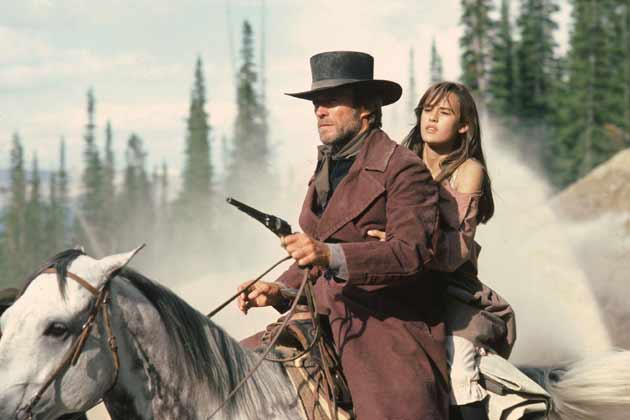
The four straight westerns Eastwood directed are usually all classified under the same umbrella of “revisionism,” but that’s not exactly accurate. In fact, it could be argued that until “Unforgiven,” he had only made one semi-revisionist western with “The Outlaw Josey Wales,” and the other two were pretty much honest attempts at genre filmmaking.
The term “revisionist” feels particularly incongruous with “Pale Rider,” maybe the most classically traditional western made since the arrival of New Hollywood in the ‘70s. Of course, Eastwood’s intentions as a director are always more complex than mere pastiche, so he always pushed the genre forward in some way. This movie is no exception: it’s loaded with more surreal elements than the average western, and the protagonist is implied to be a inhuman figure, either a ghost or, more likely, some sort of divine instrument of justice – something Eastwood suggests in a beautiful sequence in the beginning, intercutting between a girl praying and him riding into town.
It’s visual logic that remains firmly rooted throughout the movie; Eastwood is often filmed in ethereal lighting (it’s visually one of his most beautiful) and often disappears between frames as if supernaturally. But aside from those touches, it’s still a fairly generic and derivative premise (a quasi-remake of “Shane,” at that) that, while executed very well, feels inferior to what he had yet to deliver as a director.
7. High Plains Drifter (1973)
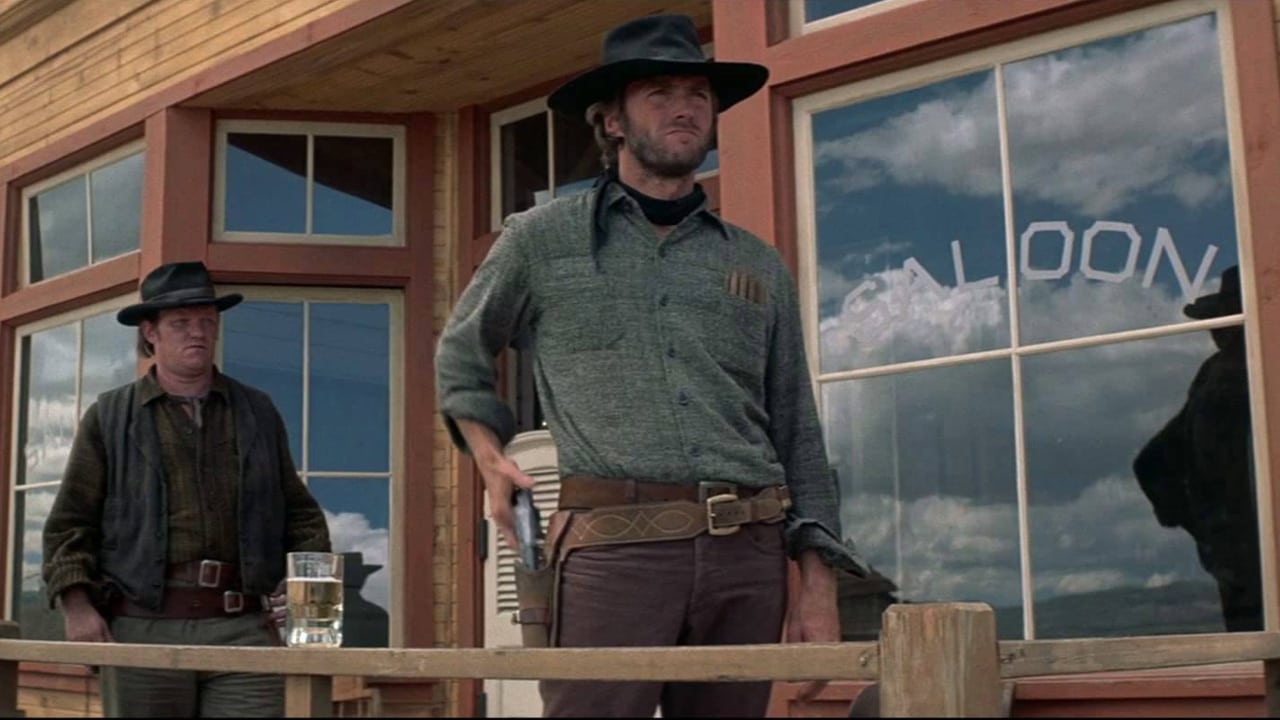
The first of his much touted “revisionist westerns”(though, as said, the merit of that moniker is debatable), “High Plains Drifter” demonstrates that even from very early on, Eastwood had a keen understanding of his own cinematic persona – and the intelligence to see the ways he could weaponize and subvert that iconic image to explore the darker facets of the western as a whole.
In this case, he takes the Man With No Name archetype that made a legend out of him and strips it of any semblance of moral fortitude: the character’s quest for revenge has little to do with objective justice, his fury is directed at everyone at all times, and his methods result in what remains some of the cruelest and rawest Eastwood has ever gotten as a filmmaker, in ways both unabashedly great, but also complicated.
Eastwood’s vision of the town as a literal Hell is just as powerful an image as ever, but the fact that his protagonist is a virulent rapist goes somewhat uninterrogated by the movie itself and his victim even seems to be ultimately smitten by him; a troublesome depiction of sexual assault, to say the least. Though reprehensible it may be, the casual cruelty of that fits directly into the tone of the movie; it’s one the grimiest westerns ever made, a surprisingly savage film by someone who would go on to be one the gentlest and most humanistic filmmakers in American cinema.
But if his tonal predilections would evolve with time, even by his second directorial effort Eastwood already proved he had learned well from his masters Siegel and Leone, creating in “High Plains Drifter” something that exists in the exact stylistic middle point between the classic American western and it’s more violent sibling, the spaghetti.